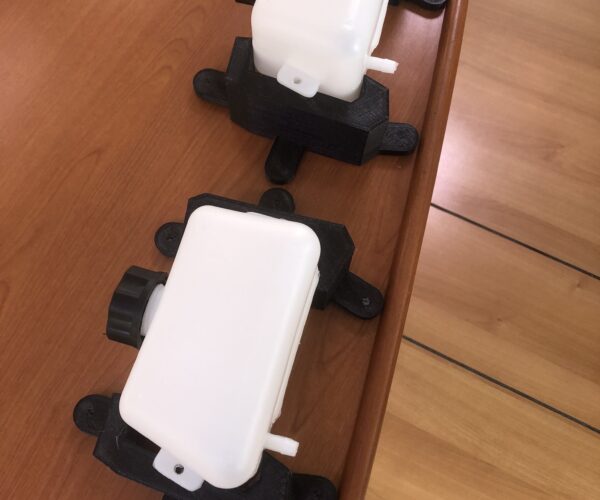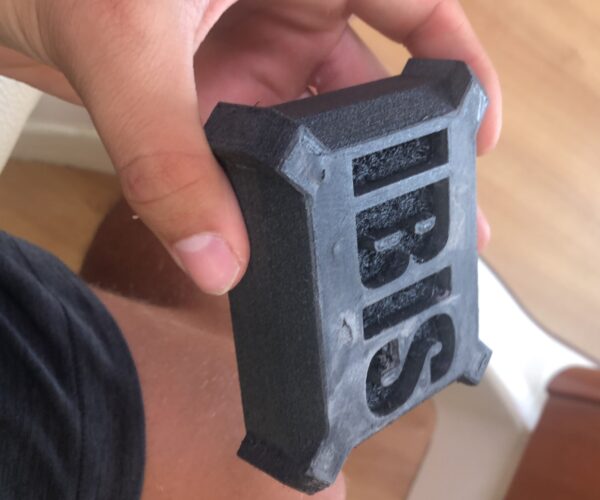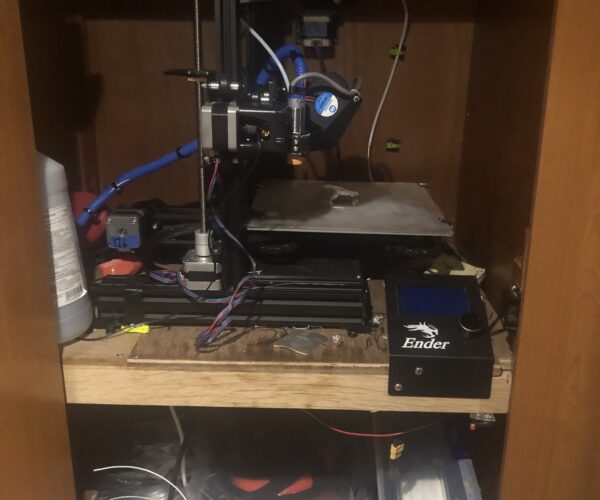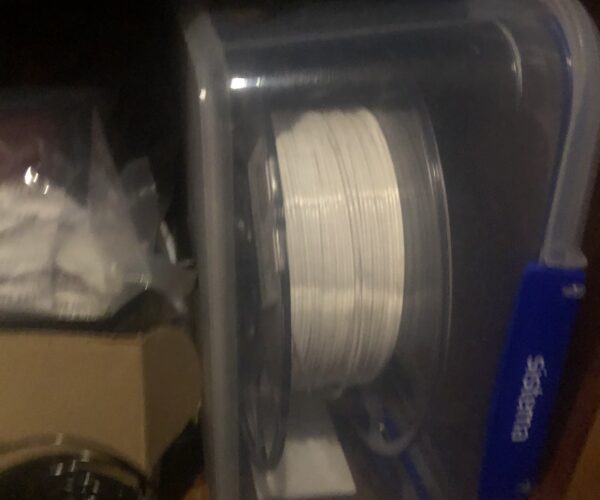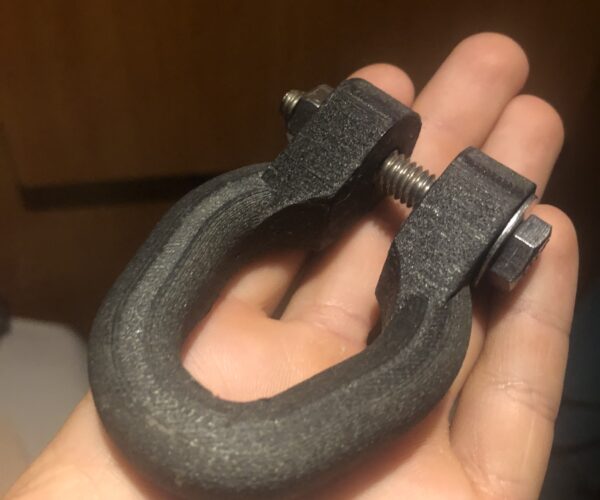3D printer on a sailboat
Hi,
I live full-time on a sailboat, a 47ft catamaran and I would like to acquire a 3D printer to ba able to manufacture some small parts aboard like plastic gears, covers and other small bits and pieces made out of ABS, ASA or even composite. Uninterrupted power supply is not an issue.
I wonder if the ever so slight movement of the boat would affect the printing? If you think it's doable, what model would you recommend and what extra precautions would I need to take please?
Harvey
Best Answer by 3Dprinting_on_SVRondo:
(I don’t know how to work this website)
I live on a leopard 46 catamaran(SV Rondo). I am 16 and I have been making boat parts for my boat. My printer is a modified ender 3 and I have been printing with it for 2 years. I should have gotten the prusa mini though. My friend has one on his boat and it is perfect for 3d printing on a sail boat.
I print with nylon, polycarbonate, nylonx, ASA (second favourite), PETG, TPU, polycarbonate carbonfiber (favourite), and PLA.
the most common printing material is ASA for us resistance and Polycarbonate carbonfiber for both sun resistance and super strength. That’s all you would really need. I dont recommend PLA for boat parts because of its poor sun resistance.
As for moisture, I have a dry box I made and use while printing. All the filament rolls are in freezer bags but I recommend vacuum bags. Nylon is tough to keep dry. Make sure it stays away from open air even while printing. If you take the right precautions, you don’t need a dryer on your boat. If your oven gets down to 80c you can use that to dry filament.
As for enclosures, I recommend one. I have my printer in a closet which is good enough for me. I also had a diy one out of styrofoam sheet which worked well.
As for power it doesn’t use too much, I don’t know exactly how much off the top of my head. Having an enclosure helps. You can hook your printer up directly depending on the printer voltage and your boat voltage. Most printers either use 12v or 24v. They have an adapter to convert 120 or 230 to 12 or 24v. You could possibly chuck the power supply out if your printer and your boat are the same voltage. For power outages, my printer has a recovery program and can resume after power outages. I think prusa has that feature as well.
As for design I use fission 360 for free and it is great. Most parts you won’t find online so you better learn to do cad(it’s pretty easy) It has offline mode but you need to download another app to use the 3d print tool in it. I think it is called mesh mixer. I use callipers to measure parts.
As for cost and parts, I order my filament from amazon ($50 usd : 1kg pc-cf, $15 usd : 1kg ASA, $30 : 1kg polycarbonate) you can get good filament from amazon for very cheap. I recommend for bed surface (g10 for nylon, ASA, and nylonx, polycarbonate sheet for polycarbonate filament and ASA, PEI for pc-cf and basic filament.
I recommend basic spares like nozzles and hot end parts. I also recommend getting hardened steel nozzle for carbon fibre filaments.
3d printing on boats is very useful sometimes. If you have one, I bet some other people will want you to make them stuff. It is certainly possible to print on a boat. I hope this poorly written comment is helpful for anyone wanting to get a printer on a boat. I highly recommend getting a prusa printer on your boat.
Bon Printing
@harvey
If it was me, I would get an MK3S+ and living on the water you will for sure want to invest in a filament dryer, not one of the weak ones e.g the Esun or sunlu single roll dryers or any like that. your going to want to look into something like a Printdry Pro, or DIY build one out of a powered food dehydrator. the MK3 printer will come with a filament spool hanger, however you will not want to use it on the boat as the motion would tend to make the 1 kg. 2.2 lb. spool shift its weight, and depending on the day this could cause problems. but you will want to keep your filament in the dehydrator running while printing anyway, so this shouldn't matter and of course you will want dry low humidity storage for any filament not in use. I personally use a foodsaver vacuum sealer to reseal my filaments when not in use, many use what is called a dry box. and of course secure your appliances (printer & filament dehydrator)
that's all I can think of at the moment.
Bon voyage,,. ur ahh Printing
Swiss_Cheese
The Filament Whisperer
Not sure if it would help or hinder but I'd try put it into a gimbal.
I assume you will only use the printer in a sheltered mooring.
I guess it helps being a cat cause you don't have to worry so much about roll.
In a boat, you will have to take care of the ventilation.I would not print ABS in a cabin.
Uninterrupted power supply is not an issue.
Stepper motor circuits can be electrically noisy so be careful not to put it on the same circuit as your nav and vhf electronics, do not run cables in the same conduits as your depth sounder, do not use your NMEA conduits. Keep it well clear of your compasses.
Engine rooms (probably not an issue in your case) and galleys are not suitable environments due to airborne grease.
Some means of protection from stray breezes would help prevent warping, it need not be a full enclosure.
@swiss_cheese's comments on drying are spot-on.
I wonder if the ever so slight movement of the boat would affect the printing? If you think it's doable, what model would you recommend and what extra precautions would I need to take please?
No problems in port - as long as you're not being banged against the wall by passing wash. Shock causes more problems than ordinary wave motion.
It has been done. I have emailed .stl's to a yacht for print-on-board spares...
You need a printer with a full frame, a Prusa Mini will not be happy as the stresses on the unsupported end of the X axis vary but a Mk3 should be OK as would a core XY.
Spools will need a horizontal mount to avoid varying stresses with a vertical or hanging mount.
Be aware that many printable plastics are vulnerable to UV light, keep your stock filaments in the dark and protect the parts you print ... after all, it's paint that keeps boats afloat.
Cheerio,
No issue
Avoid printing from PLA, which would not only melt under the sun but also crumble over time, due to the UV radiation, choose ASA or other technical materials and you should be golden. The mentioned dry box is a good idea.
The movement of the boat shouldn't be an issue really, especially with Mk3. The printer can print even upside down (I've seen it on my own eyes :))
Printing upside down isn't that hard
You can align the printer in any direction you want as long as the z-offset is calibrated properly. You will definitely see some marks from the vibrations of the waves if you are not using a gimble or something else, assuming that you are sailing on the ocean and not on a 2 hectare lake with no waves at all 😀
Those marks shouldn't cause much trouble, just an imperfection on the print surface.
Many people use damping mats in combination with a very solid surface to keep the vibrations to a minimum and generate the best foundation for a 3d-printer.
I wouldn't recommend a Prusa Printer anyways when it comes to printing large ABS / ASA parts. You will definitely need a closed environment with a heated chamber.
I'm printing ABS+ from eSun on my Prusa Mini quite satisfactory, but I'm using a heated chamber and as well printing only smaller parts.
Electrical EngineerWorking on master’s degree in electrical engineering
Reply to my own post
(I don’t know how to work this website)
I live on a leopard 46 catamaran(SV Rondo). I am 16 and I have been making boat parts for my boat. My printer is a modified ender 3 and I have been printing with it for 2 years. I should have gotten the prusa mini though. My friend has one on his boat and it is perfect for 3d printing on a sail boat.
I print with nylon, polycarbonate, nylonx, ASA (second favourite), PETG, TPU, polycarbonate carbonfiber (favourite), and PLA.
the most common printing material is ASA for us resistance and Polycarbonate carbonfiber for both sun resistance and super strength. That’s all you would really need. I dont recommend PLA for boat parts because of its poor sun resistance.
As for moisture, I have a dry box I made and use while printing. All the filament rolls are in freezer bags but I recommend vacuum bags. Nylon is tough to keep dry. Make sure it stays away from open air even while printing. If you take the right precautions, you don’t need a dryer on your boat. If your oven gets down to 80c you can use that to dry filament.
As for enclosures, I recommend one. I have my printer in a closet which is good enough for me. I also had a diy one out of styrofoam sheet which worked well.
As for power it doesn’t use too much, I don’t know exactly how much off the top of my head. Having an enclosure helps. You can hook your printer up directly depending on the printer voltage and your boat voltage. Most printers either use 12v or 24v. They have an adapter to convert 120 or 230 to 12 or 24v. You could possibly chuck the power supply out if your printer and your boat are the same voltage. For power outages, my printer has a recovery program and can resume after power outages. I think prusa has that feature as well.
As for design I use fission 360 for free and it is great. Most parts you won’t find online so you better learn to do cad(it’s pretty easy) It has offline mode but you need to download another app to use the 3d print tool in it. I think it is called mesh mixer. I use callipers to measure parts.
As for cost and parts, I order my filament from amazon ($50 usd : 1kg pc-cf, $15 usd : 1kg ASA, $30 : 1kg polycarbonate) you can get good filament from amazon for very cheap. I recommend for bed surface (g10 for nylon, ASA, and nylonx, polycarbonate sheet for polycarbonate filament and ASA, PEI for pc-cf and basic filament.
I recommend basic spares like nozzles and hot end parts. I also recommend getting hardened steel nozzle for carbon fibre filaments.
3d printing on boats is very useful sometimes. If you have one, I bet some other people will want you to make them stuff. It is certainly possible to print on a boat. I hope this poorly written comment is helpful for anyone wanting to get a printer on a boat. I highly recommend getting a prusa printer on your boat.
Catamarans don’t move a whole lot at anchor. Prusa mini is fine, my friend has one on his catamaran but I don’t know if he as tried on passage. I print on a modified ender 3 on passage. It isn’t bolted down or anything. Even on rough passages it prin...
Catamarans don’t move a whole lot at anchor. Prusa mini is fine, my friend has one on his catamaran and it prints flawlessly but I don’t know if he as tried printing on passage. I print on a modified ender 3 on passage. It isn’t bolted down or anything. Even on rough passages it prints like a charm
Ventilation
I have a hatch I open when printing ASA because of the fumes. I usually have the hatch closed if I’m printing something else.
It depends on your local waters and your mooring. If you are on your home mooring most of the time then you will quickly learn what to expect but if mostly on passage it's important to be prepared for worse conditions.
Cheerio,
Great news
Thanks very much for your feedback on your setup and all the details. I mean everybody above had very positive comments about using a 3D printer on a boat (thanks all!) but you've done it for a few years and even print on rough passages, I'm amazed!
Where abouts are you cruising at the moment? We are in the Caribbean on SV Kapa Rico. do you have Whatsapp? Can you please contact me ? my number is +590690133153
Roll of ocean
Fascinating topic. I can see where this would be useful on the float. Does the roll of the ocean effect the printer?
--------------------
Chuck H
3D Printer Review Blog
This is a great idea!
This is a great idea!
Printing on board!
Fairly new to 3D printing but 35 years on board! We have a MK3S+ on board a 46 foot ketch. Have not tried printing on passage but no problem with wakes where we are. We are getting set to start printing prosthetic hands and lower arms (e NABLE) here. Using a filament dryer as here in Guatemala it is a touch humid. Honestly unless conditions are really kicking I don't see any issues with it.
filament dryer onboard
Hi Eric, thanks for the reply. Glad to hear it's all working well onboard, especially on a monohull at anchor which I thought might be more challenging. I never heard of e Nable, looked it up and it looks a fantastic idea, will definitely get into that once we get out 3D printer. I take it you are happy with your MK3S+? Any spare parts recommendations to be carried onboard? Nozzles, thermistors, what else? Also what filament drier did you go for? food dehydrators are quite power hungry, somebody above didn't recommend the Sun nor the Sunlu, maybe the EIBOS Filament Dryer Box might be a better option?
RE: print dry
EIBOS Filament Dryer Box is a good product. I have one. I prefer the food dehydrator and Print Dry, but EIBOS works.
--------------------
Chuck H
3D Printer Review Blog
EIBOS Filament Dryer box
Thanks Chuck, do you believe this dryer doesn't work as well as a food dehydrator or you just prefer to use the latter?
EIBOS
I think it works fine. I can get a dehydrator for 1/4 the price and it works just as well.
Thanks Chuck, do you believe this dryer doesn't work as well as a food dehydrator or you just prefer to use the latter?
--------------------
Chuck H
3D Printer Review Blog
